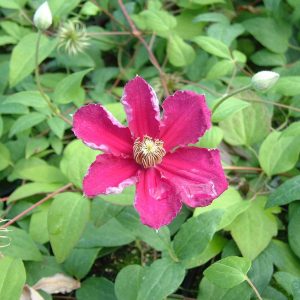Description
Polemonium caeruleum, also known as Jacob’s Ladder, is a species of perennial flowering plant in the Polemoniaceae family, native to Europe and Asia. It is known for its clusters of delicate, blue, bell-shaped flowers that bloom in late spring to early summer and its deeply-cut, fern-like leaves. The plant typically reaches a height of 60-90 cm and width of 30-60 cm at maturity. It prefers moist, well-drained soils and partial to full shade. This plant is a great choice for adding color in the shade garden and it’s also great for use in borders, rock gardens, and as a specimen plant. It’s also good for attracting pollinators and butterflies.
Key Facts
- Common Name(s):Jacob’s Ladder
- Hardiness:Fully hardy through most of the UK
- How big will I get? Polemonium caeruleum can grow to a height of 0.9m and a spread of 0.5m.
- Did You Know That:The common name “Jacob’s ladder” comes from the fact that the leaves resemble the rungs of a ladder?
Plant Calendar
A rough guide to how this plant will change through the year.
| Jan | Feb | Mar | Apr | May | June | July | Aug | Sept | Oct | Nov | Dec | |
| Flowering Time |  |
 |
 |
 |
||||||||
| Foliage Colour |  |
 |
 |
 |
 |
 |
 |
 |
 |
| J | F | M | A | M | J | J | A | S | O | N | D |
 |
 |
 |
 |
||||||||
 |
 |
 |
 |
 |
 |
 |
 |
 |
Care Guide

Soil Requirements
Polemonium caeruleum prefers moist but well-draining soil. This plant can grow in soil with a wide range of pH levels, it is not picky about the pH level of the soil.

Best Position
Polemonium caeruleum can handle either an exposed or a sheltered position and can cope with either full sun or partial shade.

Maintenance
Polemonium caeruleum should be cut back after it finishes flowering will promote growth the following year by redirecting energy from seed production and foliage maintenance to root growth.

Pest, Diseases and Wildlife
Polemonium caeruleum is generally pest free, it can be vulnerable to certain diseases such as powdery mildews. It is not considered to be toxic.





